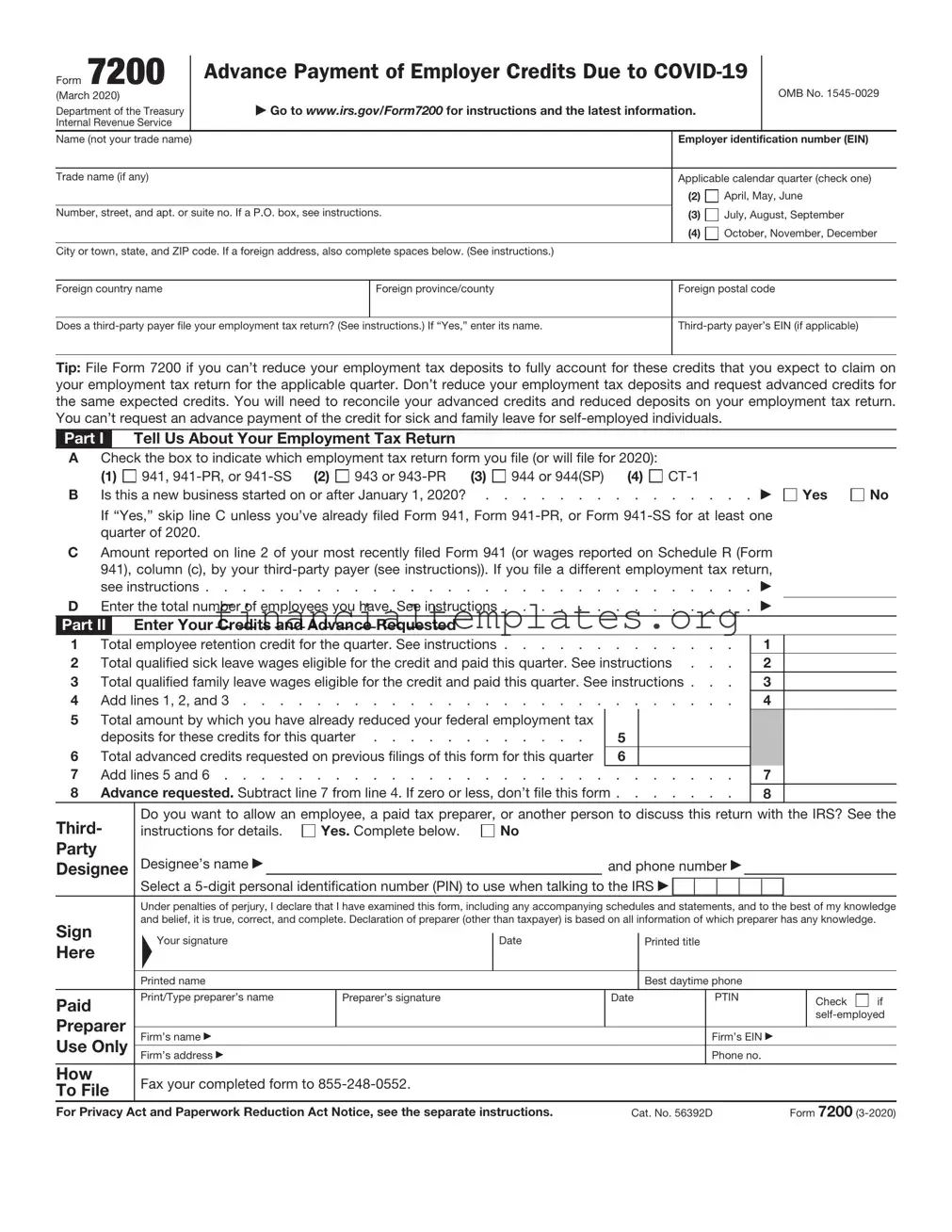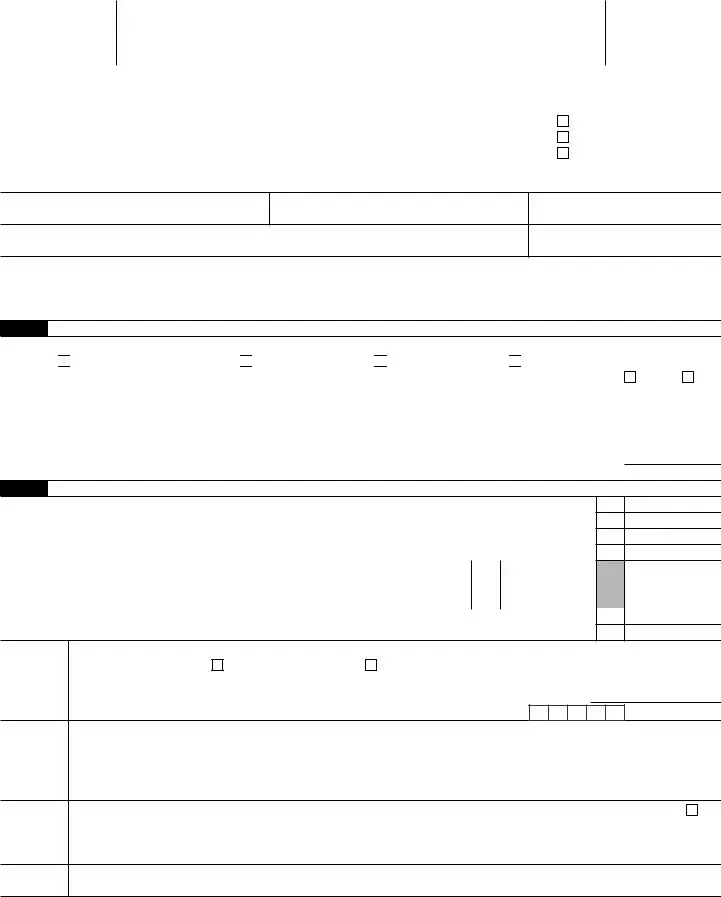The IRS Form 941, Employer's Quarterly Federal Tax Return, shares similarities with the IRS 7200 form in its purpose of reporting employer tax obligations. Both forms are integral to the process of managing employment taxes, yet they serve different reporting time frames. Form 941 is submitted quarterly, documenting wages paid, tips employees received, federal income tax withheld, and both employer's and employees' share of social security and Medicare taxes. Conversely, Form 7200 allows for the advance payment of employer credits due to the pandemic exigencies.
IRS Form 944, Employer's Annual Federal Tax Return, is designed for smaller employers to report their tax obligations annually rather than quarterly, which parallels the IRS 7200 in its focus on employer tax responsibilities. While Form 7200 facilitates the advanced receipt of credits for sick and family leave and employee retention in a crisis context, Form 944 aggregates a year’s worth of employment tax liability, such as Social Security, Medicare, and withheld federal income tax, offering a simpler annual filing option for those eligible.
The IRS Form W-2, Wage and Tax Statement, similar to the IRS 7200 form, deals with employment taxes. Form W-2 is issued by employers to report employees' annual wages and the amount of taxes withheld from their paychecks. Its connection to Form 7200 lies in the fundamental requirement of accurate employment tax reporting. Both forms ensure that credits, such as those for sick and family leave, are correctly administered based on the wages reported, albeit serving different stages in the tax reporting and reimbursement process.
IRS Form W-4, Employee's Withholding Certificate, indirectly correlates with the IRS 7200 form by addressing the initial stage of employment tax handling. Employees use Form W-4 to determine the amount of federal income tax to withhold from their pay. In essence, the correct completion of Form W-4 impacts the accuracy of calculations for credits on Form 7200, especially since these credits are based on taxes owed and paid on employee wages. Thus, accurate tax withholding directly influences the reconciliation processes involved with the IRS 7200.
IRS Form 1099-NEC, Nonemployee Compensation, relates to IRS 7200 in the broader context of tax reporting for payments made to non-employees. While the 7200 form addresses advance payments of employment tax credits to employers, Form 1099-NEC is used to report payments to independent contractors. This relationship highlights the diverse mechanisms through which work compensation and associated taxes are reported, emphasizing the comprehensive nature of employment and contractor tax reporting and its implications for credit calculations and advances.
Lastly, IRS Form 8850, Pre-Screening Notice and Certification Request for the Work Opportunity Credit, bears resemblance to IRS 7200 due to its role in facilitating tax credits for employers. Form 8850 is used by employers to pre-screen and certify that an employee is a member of a targeted group to qualify for the work opportunity tax credit. Like Form 7200, this form is part of the process for employers to claim certain tax relief benefits, illustrating the varied channels through which businesses can manage their tax liabilities in response to employment practices.

